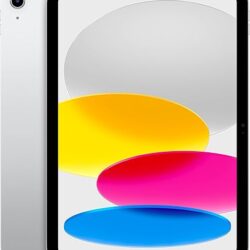二、数词的语法特点 Grammatical features
(一)基本的数词可以和某些词连在一起表示各种数。 The above basic numerals can be combined with some words to re- present various kinds of numbers.
1.整数 Whole numbers
基本的数词可以互相组合起来表示其他整数。例如: The basic numerals can be combined to represent whole numbers.For example:
十一 (11) 十六(16) 三十(30) 一百四十五(145) 三千零七十(3070) 一万五千三百二十(15 320)
2.序数
Ordinal numbers
(1) 数词前边加上词头“第”可以表示顺序。例如:
Ordinal numbers can be formed by placing the prefix 第 before numerals. For example:
第一 第二 第十二 第一百零八
(2)数词后边可以直接带名词表示序数。常见的有:
However numerals can be put directly before nouns to act as ordinal numbers. Following are some common instances:
大哥(第一个哥哥) 二姐 三弟
一月 三楼 七层
731 路(公共汽车)
625 次(火车)
(3)家庭成员同辈排行时常用词头“老”称呼。例如:
To list the seniority among brothers or sisters, 老is often used in the beginning of a word. For example:
老大(第一个、最年长的) 老二 老五
老大(the eldest) 老二 老五
还可以说排行:行三 行六
You can also use “行”: 行三 行六
3.倍数
Multiple numbers
数词后边加量词“倍”字表示倍数。例如:
Multiple numbers are formed by adding the measure word f after numerals. For example:
一倍 五倍 二十倍
4. 小数
Decimals
数词可以用在…点……”这一格式里表示小数。前面的数字是整数,后面的数字是小数。例如:
Decimals are shown by the formula…… 点…..The number before 点 is the whole number and the figures after 点 are the decimal places. For example:
零点三(0.3)
三点一四一六(3. 1416)
二十点七五(20.75)
5.分数
Fractions
数词可以用在…分之……”这一格式里表示分数。前边的数字是分母,后边的数字是分子。例如:
We use “…… 分之….” to indicate fractions. The denominator is placed before the numerator. For example:
三分之二
百分之六十
十分之七
千分之一
6. 概数
Approximate numbers
表示概数的方法,常用的有以下几种:
There are different ways of indicating approximate numbers. Here we introduce only the most common ones:
(1)邻近的两个数词连用。例如:
Using two adjacent numerals together. For example:
一两个
七八个
十五六
三四十
四五百
(2)数词“几”可以表示1~9之间的概数。“几”常用在“十、百、千、万、亿”前面或“十”后面。例如:
Using the numeral JL (several ) which can be substituted for the numbers from one to nine. 几 is often put before 十、百、千、万、亿 or after 十. For example:
屋子里有十几个人。
我有几本中文书。
阅览室有几百种杂志。
(3) 数词“多”用在“十、百、干、万”等数词后边表示多于前边的数目,但还达不到下一个整数。例如:
Adding the numeral 3 after +, H, †, 5, etc. to indicate a number bigger than the given one, but smaller than the next round number. For example:
我们班一共十多个同学。(不到20个)
她们捐助了一万多块钱。(不到两万块)
(4)数词“十、百、千、万”等后边常加“来”表示接近前边的数目。例如:
Putting 多 after 十、百、千、万, etc. to show a number near the quantity indicated by the given figure. For example:
这儿有三十来把椅子。
(5)数词后边可以加“左右、上下”表示概数。例如:
Adding Ei or EF after a numeral. For example:
十五左右
三十左右
五千左右
八十上下
六百上下
两万上下
 亚马逊导购
亚马逊导购  读新闻学外语
读新闻学外语  卑诗省当天新盘
卑诗省当天新盘
(二)在现代汉语中,数词和名词之间要用一个适当的量词(如“个、条、辆、本、支”等)。例如:
In modern Chinese, there is always a measure word (such as 个、条、辆、本、支, ect. ) between the numeral and the noun it modifies. For example:
一个学生
六辆汽车
三条鱼
五支毛笔
四本画报
两只耳朵








